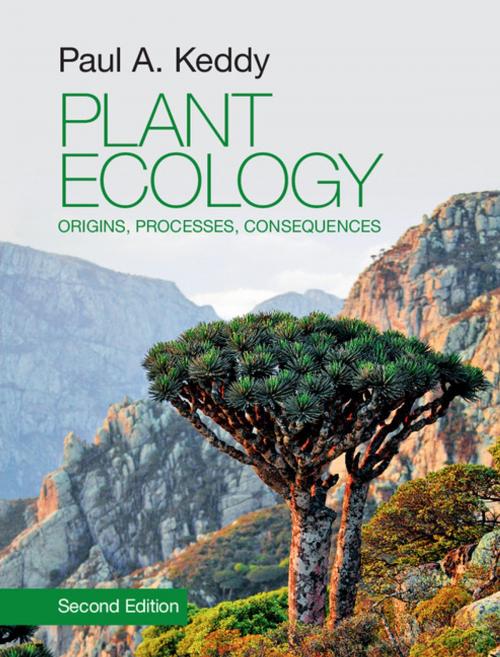Plant Ecology
Origins, Processes, Consequences
Nonfiction, Science & Nature, Science, Biological Sciences, Ecology, Mathematics| Author: | Paul A. Keddy | ISBN: | 9781316727256 |
| Publisher: | Cambridge University Press | Publication: | April 17, 2017 |
| Imprint: | Cambridge University Press | Language: | English |
| Author: | Paul A. Keddy |
| ISBN: | 9781316727256 |
| Publisher: | Cambridge University Press |
| Publication: | April 17, 2017 |
| Imprint: | Cambridge University Press |
| Language: | English |
Presenting a global and interdisciplinary approach to plant ecology, this much-awaited new edition of the book Plants and Vegetation integrates classical themes with the latest ideas, models, and data. Keddy draws on extensive teaching experience to bring the field to life, guiding students through essential concepts with numerous real-world examples and full-colour illustrations throughout. The chapters begin by presenting the wider picture of the origin of plants and their impact on the Earth, before exploring the search for global patterns in plants and vegetation. Chapters on resources, stress, competition, herbivory, and mutualism explore causation, and a concluding chapter on conservation addresses the concern that one-third of all plant species are at risk of extinction. The scope of this edition is broadened further by a new chapter on population ecology, along with extensive examples including South African deserts, the Guyana Highlands of South America, Himalayan forests and arctic alpine environments.
Presenting a global and interdisciplinary approach to plant ecology, this much-awaited new edition of the book Plants and Vegetation integrates classical themes with the latest ideas, models, and data. Keddy draws on extensive teaching experience to bring the field to life, guiding students through essential concepts with numerous real-world examples and full-colour illustrations throughout. The chapters begin by presenting the wider picture of the origin of plants and their impact on the Earth, before exploring the search for global patterns in plants and vegetation. Chapters on resources, stress, competition, herbivory, and mutualism explore causation, and a concluding chapter on conservation addresses the concern that one-third of all plant species are at risk of extinction. The scope of this edition is broadened further by a new chapter on population ecology, along with extensive examples including South African deserts, the Guyana Highlands of South America, Himalayan forests and arctic alpine environments.















